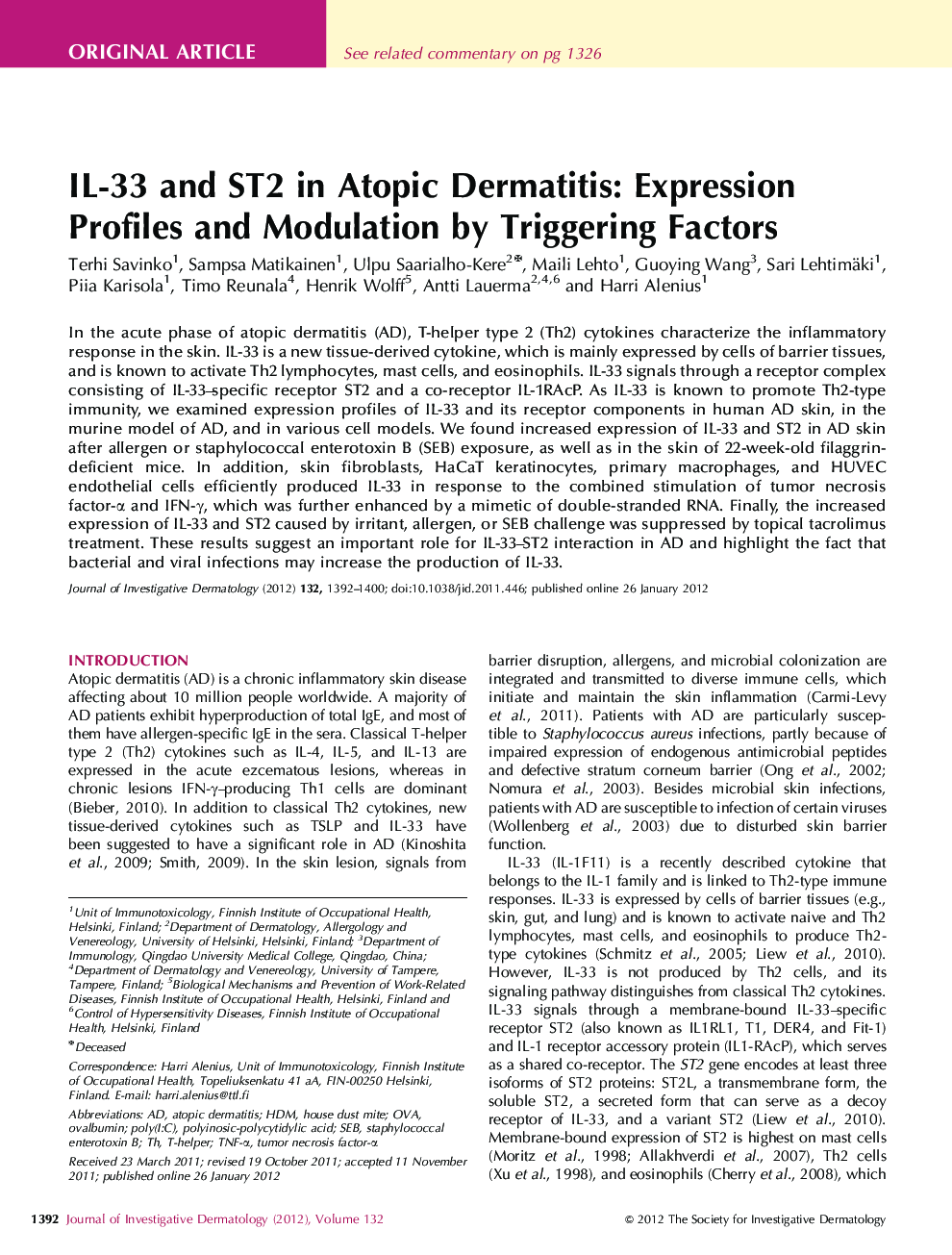| Article ID | Journal | Published Year | Pages | File Type |
|---|---|---|---|---|
| 3215635 | Journal of Investigative Dermatology | 2012 | 9 Pages |
In the acute phase of atopic dermatitis (AD), T-helper type 2 (Th2) cytokines characterize the inflammatory response in the skin. IL-33 is a new tissue-derived cytokine, which is mainly expressed by cells of barrier tissues, and is known to activate Th2 lymphocytes, mast cells, and eosinophils. IL-33 signals through a receptor complex consisting of IL-33–specific receptor ST2 and a co-receptor IL-1RAcP. As IL-33 is known to promote Th2-type immunity, we examined expression profiles of IL-33 and its receptor components in human AD skin, in the murine model of AD, and in various cell models. We found increased expression of IL-33 and ST2 in AD skin after allergen or staphylococcal enterotoxin B (SEB) exposure, as well as in the skin of 22-week-old filaggrin-deficient mice. In addition, skin fibroblasts, HaCaT keratinocytes, primary macrophages, and HUVEC endothelial cells efficiently produced IL-33 in response to the combined stimulation of tumor necrosis factor-α and IFN-γ, which was further enhanced by a mimetic of double-stranded RNA. Finally, the increased expression of IL-33 and ST2 caused by irritant, allergen, or SEB challenge was suppressed by topical tacrolimus treatment. These results suggest an important role for IL-33–ST2 interaction in AD and highlight the fact that bacterial and viral infections may increase the production of IL-33.
